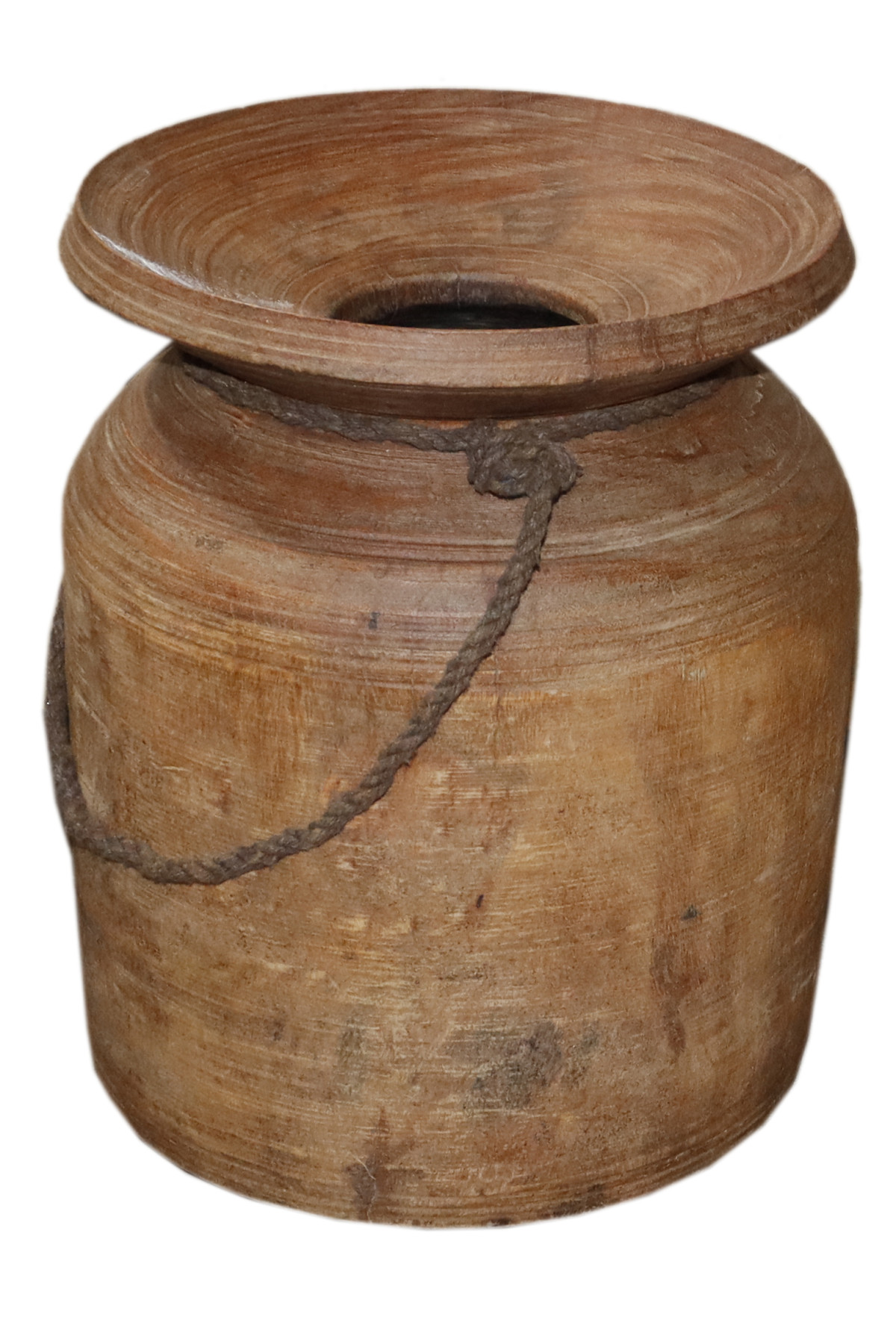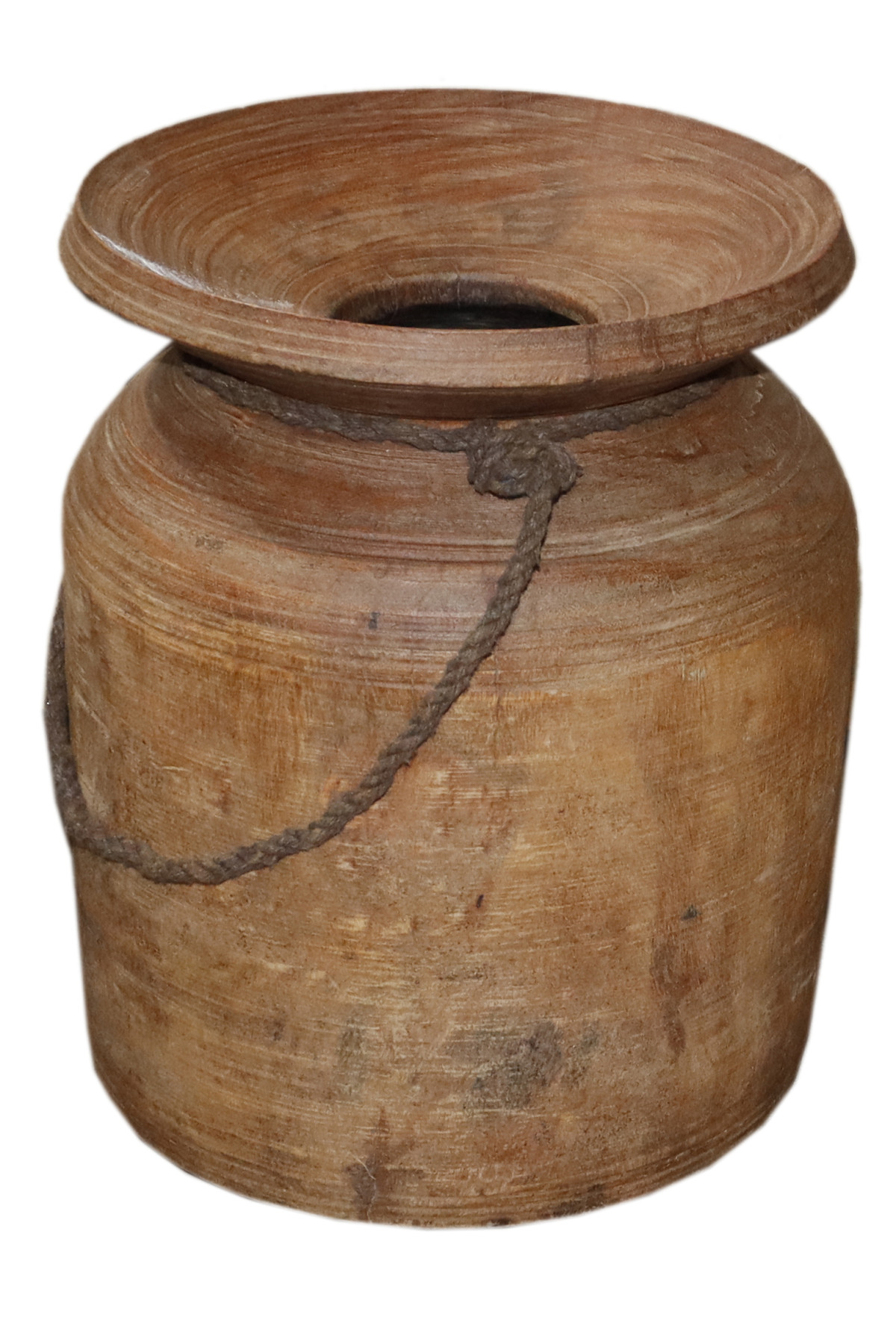Ancient wooden storage jars from northern India, often called "matkas" or "bharanis", are traditional containers used to store various foods, liquids, or spices. These jars have a long history and are embedded in the cultural and domestic practices of the region. Here is a detailed description of these objects:
Material and construction
The jars were made from hardwoods, such as teak, mango, or other local species, chosen for their strength and resistance to moisture. The wood was often treated to prevent mold and moisture degradation, an important consideration in the climate of northern India, where dry and wet seasons alternate. Artisans used turning and carving techniques to shape these containers, and in some cases, the jars were reinforced with iron bands or metal nails.
Shape and size
The jars were generally cylindrical or slightly conical in shape, with a flat bottom for stability. They could range in size from small jars used to store spices or herbs to large containers used to store liquids such as water, milk or fermented products such as yoghurt. Some jars were large enough to hold several litres of contents, while others were more compact, adapted to specific uses.
Covering and airtightness
A notable aspect of wooden storage jars was their sealing system. Many had wooden lids or ceramic stoppers, which helped to keep the container airtight. In the case of jars used to store food products (such as canned vegetables or fruit), layers of leaves or strips of cloth could be added before sealing the jar tightly, creating a barrier against air and insects.
Traditional use
Wooden jars were commonly used in rural and urban homes to store food products. For example, pickles (pickled vegetables or fruits), fermented vegetables, or ghee (clarified butter) were stored in these pots. Wood, with its natural properties, helped maintain a stable temperature and protect the food from pests. In some regions, these pots were also used for fermenting beverages such as bajra (millet) or fermented milk.
Decor and aesthetics
The storage pots were sometimes decorated in a simple but elegant manner. The woodwork was sometimes adorned with geometric patterns or finely crafted engravings, reflecting local craft traditions. Some pots had carvings or relief decorations, while others were left in a more natural state, highlighting the texture of the wood.
Cultural significance
Beyond their utilitarian function, these pots often had a symbolic or cultural dimension. In many families in northern India, the making and use of these pots were linked to rituals and practices of preserving culinary traditions. In addition, in some communities, these containers were considered precious objects, often passed down from generation to generation.
Decline and Modernity
With industrialization and the increased use of modern materials such as plastic and stainless steel, these wooden jars have become less common. However, some local crafts continue to make these jars for traditional markets or as decorative objects. They are also sought after by lovers of old crafts or those who prefer more natural preservation methods.
In summary, the ancient wooden preservation jars of northern India are a fascinating example of the ingenuity and cultural richness of this region. Their functional design and artisanal manufacturing are evidence of ancestral know-how, in perfect harmony with the practical needs of daily life.
Dimensions: 35x28x28cm

 0
0



































